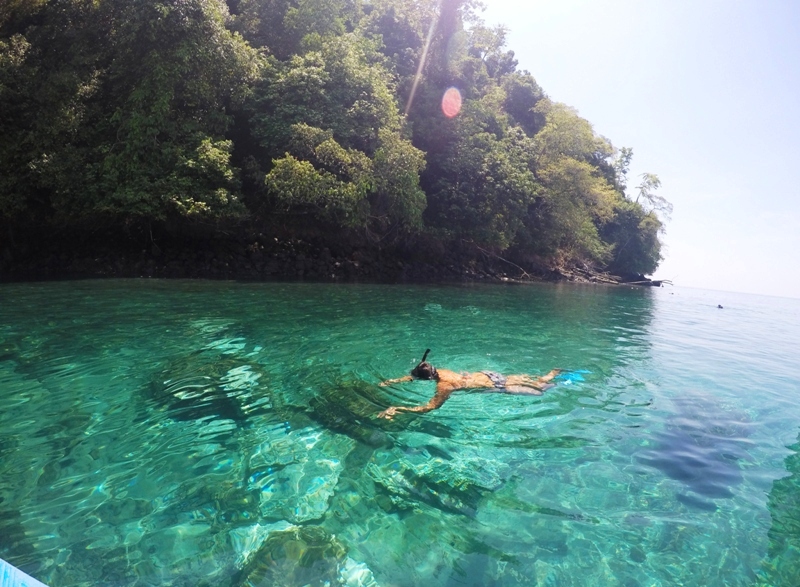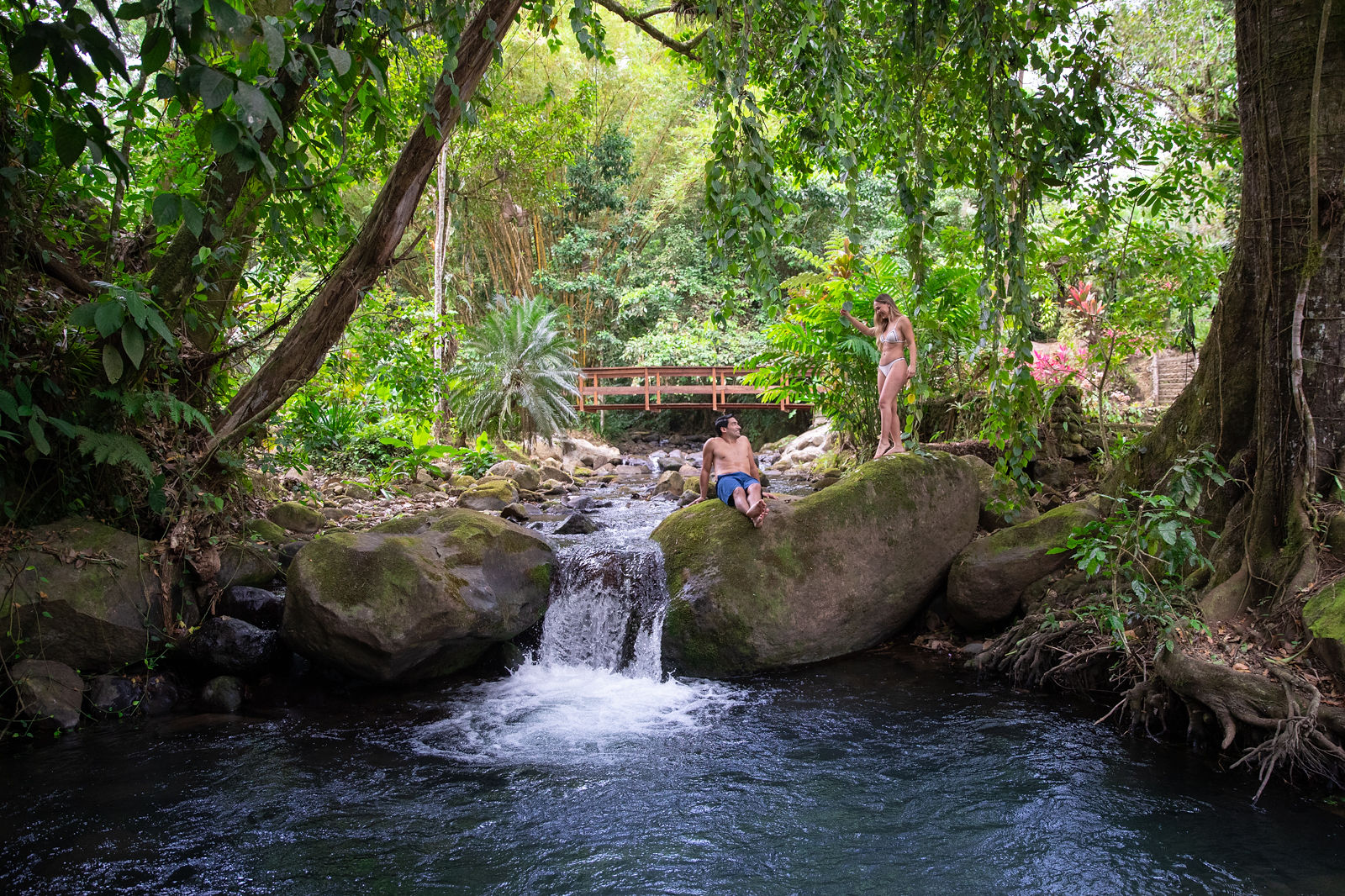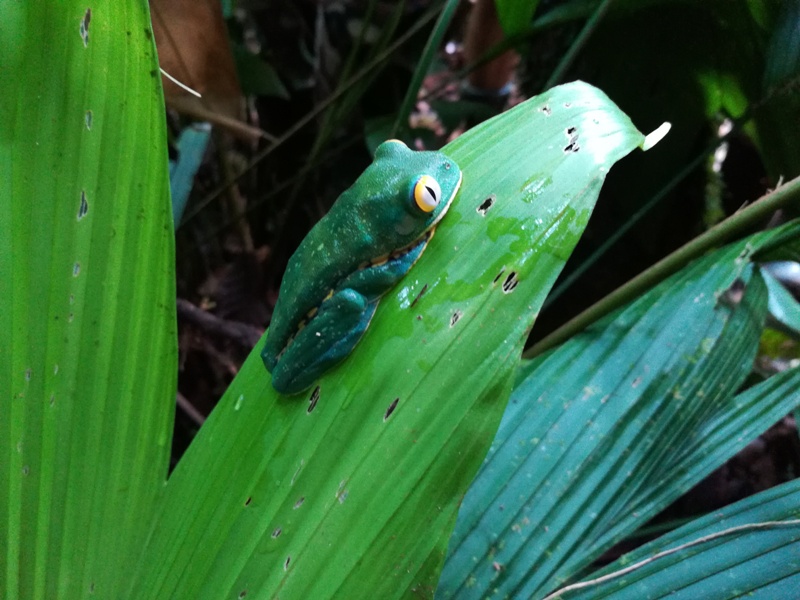Nestled between the world-renowned, biodiversity-rich Osa Peninsula and the deep southern Pacific coast of Costa Rica is the beautiful body of protected waters, appropriately called Golfo Dulce. This tranquil, secluded lake-like gulf translates to Sweet Gulf and is a natural paradise awaiting to be explored and enjoyed by nature and serenity lovers. It is worth the trip down? It is that beautiful? Will I see lots of wildlife? Is there great lodging? Let’s see why Costa Rica’s Golfo Dulce is a must-visit destination.
The Golfo Dulce is located on the southern Pacific ocean coastline of beautiful Costa Rica. This tropical fiord is a place of contrasts, marine, bird, and wildlife, jungles, and unique places to stay, like Enchanting Hotel’s Nicuesa Rainforest Lodge, cataloged as one of the best eco-lodges in Costa Rica.
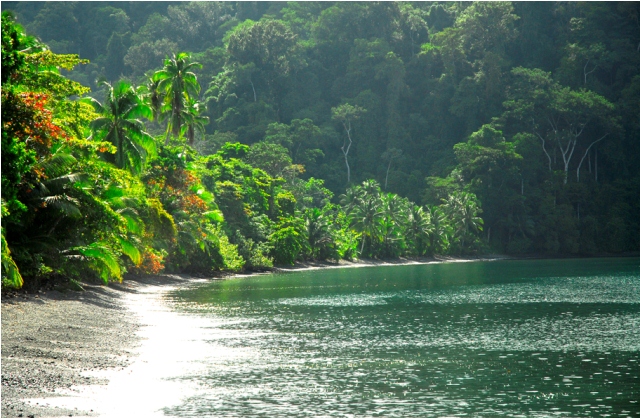
No need for a sweater, but definitely bring your swimmers and a sun hat!
Should I bring a sweater?
The Golfo Dulce is warm and humid all year round with average temperatures between 70 – 90° F. Days are warm and balmy while evenings are a bit cooler, made even more comfortable with the architectural design of the Nicuesa cabins that were designed to welcome the rainforest and ocean breezes. No need for sweaters here! The thoughtful design of the Nicuesa cabins means you feel the cool breezes coming in from the Golfo Dulce and through the refreshing rainforest, especially after a walk there.
Due to its location, the Golfo Dulce is the epitome of tropical, so rain is normal and part of the daily landscape. September and October are traditionally wetter than the rest of the year, while December and May are drier. If you come in November or December, this is the “coolest” time of the year, but at around 70°F, light clothing is still perfect!
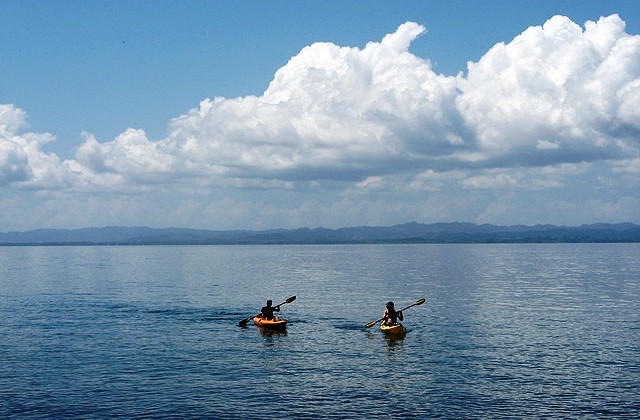
Kayaking through the mangrove forest is magical
What type of forests will I find?
The Golfo Dulce and Osa Peninsula of Costa Rica has a wide range of forest types, each with unique characteristics and ecosystems. Here are the most common kinds of forests you can find in the area:
Tropical Lowland Primary Rainforest:
The Osa Peninsula is known for its lush rainforests, characterized by tall trees, dense vegetation, and high levels of rainfall. These forests are incredibly diverse, with thousands of plant and animal species. Nicuesa is immersed in the rainforest, so take some time to hike through it along one of the many auto-guided trails, although you can hire the naturalist guide too, which is even better!
Mangrove forest:
Mangrove forests are found in the intertidal zone, where saltwater and freshwater meet. These forests are important breeding grounds for many fish and bird species and provide a habitat for various invertebrates. Mangrove forests also provide a natural buffer against storms and erosion. Take the Nicuesa Mangrove Kayaking Tour to get a real sense of this incredibly diverse forest.
Secondary forest:
These forests are areas that have been previously cleared for agriculture or other human activities but have since been left to regrow naturally. Secondary forests are often less diverse than primary forests but still provide a habitat for many species.
Overall, the Golfo Dulce and Osa Peninsula area is a paradise for nature enthusiasts, with diverse forests and ecosystems to explore and enjoy.
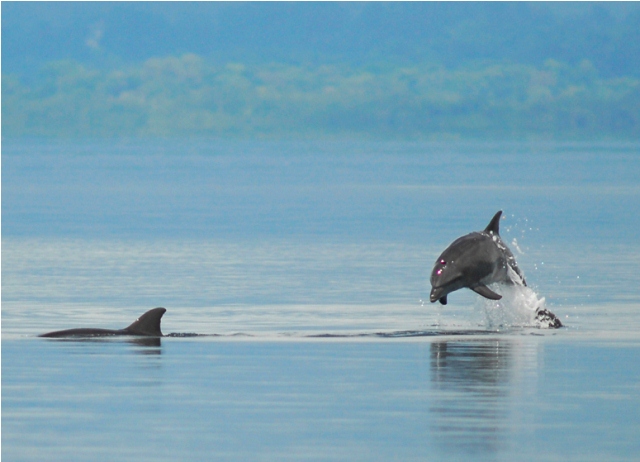
A standard fixture around Nicuesa Rainforest Lodge is an alarm clock. The Howler Monkey
The land of the wildlife
Where do we start? The southern Pacific coast of Costa Rica, including the Golfo Dulce and the Osa Peninsula, is a wildlife lover’s paradise.
The Golfo Dulce and Osa Peninsula in Costa Rica are known for their high levels of biodiversity. The exact number of animal species in this region is difficult to determine as new species are still being discovered and documented. However, it is estimated that there are tens of thousands of animal species in the region, including:
- · Over 400 species of birds
- · More than 140 species of mammals
- · Over 100 species of reptiles
- · Over 70 species of amphibians
- · Thousands of species of insects and other invertebrates
This incredible diversity is due to the region’s unique geographic location, a bridge between North and South America, and diverse habitats such as rainforests, mangroves, and coral reefs. The Golfo Dulce and Osa Peninsula are also home to several endangered and threatened species, such as the jaguar, scarlet macaw, and hawksbill turtle.
Did you know that the Golfo Dulce is home to 25 species of whales and dolphins and eight different sea turtles? In addition, you can also spot manta rays, sailfish, marlin, tuna, and sharks, including the critically endangered whale shark.
With the diversity of wildlife, the Golfo Dulce is the perfect photography lover’s dream destination. During your travels through the rainforest or on the Golfo Dulce, the animal spotting opportunities are endless at all levels, in the water, on the banks, and in the trees.
The Golfo Dulce and Osa Peninsula in Costa Rica are known for their incredibly diverse and unique ecosystems. Here are some examples of the different species of animals you may find in this region:
- Scarlet Macaw – This colorful parrot is one of the most iconic animals of the Osa Peninsula. They are easily spotted in the trees and in flight.
- Tapir – Also known as the “mountain cow,” these large mammals are often spotted along forest trails or near water sources.
- Spider Monkey – One of the most acrobatic primates, spider monkeys can be seen swinging through the trees and playing in the canopy.
- Jaguar – This large cat is one of the top predators in the area, but they are also quite elusive and difficult to spot.
- Sloth – The Golfo Dulce and Osa Peninsula are home to two species of sloths: the three-toed and the two-toed. They are usually found lounging in the trees.
- Sea Turtles – Several species of sea turtles nest along the beaches of the Osa Peninsula, including the olive ridley and the hawksbill.
- Poison Dart Frog – These brightly colored frogs are known for their toxic skin, which helps protect them from predators.
- Crocodile – The mangrove swamps and rivers of the area are home to several species of crocodiles, including the American and the Morelet crocodile.
- Humpback Whale – The Golfo Dulce is a popular spot for whale watching, and humpback whales can often be seen breaching and playing in the water.
- Harpy Eagle – This large bird of prey is one of the most impressive animals in the area, with a wingspan of up to seven feet. They are a rare sight but can be spotted in the forest canopy.
These are just a few examples of the many animal species found in the Golfo Dulce and Osa Peninsula of Costa Rica. The area is truly a nature lover’s paradise with stunning wildlife.
Nicuesa Rainforest Lodge is an active member of the Golfo Dulce community and conservation efforts. With the privilege of living on its shores comes responsibility, and Nicuesa has embraced this duty with dedication and commitment. When staying at Nicuesa Rainforest Lodge, you ultimately become part of this movement and will inevitably fall in love with the Golfo Dulce too!



